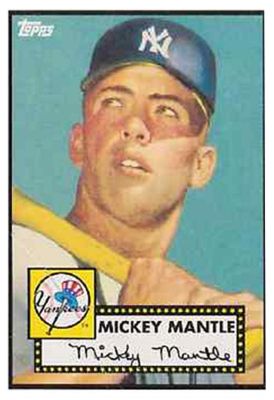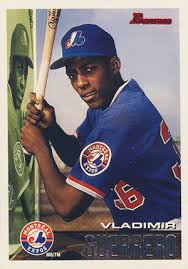Just when you thought you knew everything there was to know about Babe Ruth, Jean Leavy’s The Big Fella: Babe Ruth and the World He Created comes along, digging deeply into uncharted territory to capture the making of America’s first celebrity and his substantial influence on sport and culture.
Leavy leaves the actual play on the field for other fine books such as Robert Creamer’s definitive BABE: The Legend Comes To Life (1974) and Leigh Montville’s masterfully written The Big Bam: The Life and Times of Babe Ruth (2006). Instead, she uses a barnstorming tour headlined by Ruth and Lou Gehrig to frame the story of Ruth’s rise to celebrity.
On the heels of the New York Yankees sweeping the Pittsburgh Pirates in the 1927 World Series, Ruth and Gehrig embarked on the mother of all barnstorming tours, allowing fans from coast to coast to witness the exploits of the baseball’s most transforming players. Ruth was fresh off a record-setting 60 home run season — breaking his own record of 59 homers established six years earlier — while Gehrig had recently been named the league’s Most Valuable Player.
The two Yankees sluggers would join opposing local teams across America, which were rebranded for the day as the Bustin’ Babes and Larrupin’ Lous. Together, they created “the biggest show since Ringling Brothers, Barnum and Bailey,” in the words of the Omaha World Herald. Leavy’s years as a staff reporter for the Washington Post is on full display as she uncovers details of each game in each city from Trenton to Omaha to San Jose. Within this 21-day odyssey, Leavy explains how the complicated, often sad and lonely life of Babe Ruth was transformed into America’s biggest personality.
The barnstorming tour was the brainchild of Christy Walsh — agent, attorney, business manager, spin doctor, and perhaps surrogate father to Ruth. Walsh created the blueprint of modern stardom, using Ruth as the subject. Describing Ruth’s and Gehrig’s three-week cross-country victory tour as the “Symphony of Swat,” Walsh was the director behind Ruth’s many endorsement deals and syndicated newspaper columns, which were ghostwritten by an array of sportswriters who also covered Ruth’s exploits on the field.
Leavy effectively narrates how Walsh was able to enterprise Ruth to reflect the temperament of the country during the Roaring Twenties. In the aftermath of World War I, attitudes were far more relaxed. People across the land openly defied prohibition and indulged in new styles of dance and dress, while rejecting many traditional pre-war standards. Who better exemplifies the have-fun-at no-cost attitude than Babe Ruth?
Tabloid newspapers, which became more popular and accessible in America following the war, chronicled Ruth’s on-the-field and off-the-field exploits and transgressions with full front and back page photos throughout the country, giving Walsh the means to build baseball’s first legend. Ruth, more than anyone else, is responsible for making the sports section a key component of everyday life.
As the result of eight years of meticulous research, Leavy also uncovered new information about Ruth’s difficult childhood, which eventually led to indulgence in every aspect of his adult life, which is explored in great detail throughout the book. Courtesy of more than 250 interviews and a trove of previously untapped documents, Leavy presents a fast, lively account of the legend that became Babe Ruth. Even if you consider yourself an expert on Babe Ruth, The Big Fella offers something new.






 During this era, Topps was the exclusive baseball card manufacturer, so Fleer — the only other major trading card producer at the time — had to take a more creative approach with its products. Facing the daring task of going head to head with the mighty Topps Co., Fleer signed Ted Williams away from Topps. The result was 1959 Fleer “Life of Ted Williams” — an 80-card series capturing a medley of snippets detailing Williams’s legendary career.
During this era, Topps was the exclusive baseball card manufacturer, so Fleer — the only other major trading card producer at the time — had to take a more creative approach with its products. Facing the daring task of going head to head with the mighty Topps Co., Fleer signed Ted Williams away from Topps. The result was 1959 Fleer “Life of Ted Williams” — an 80-card series capturing a medley of snippets detailing Williams’s legendary career.

 is indiscriminate strike zone, Guerrero’s amazing hand-eye coordination translated to a .318 lifetime batting average. In the modern baseball era, there are only 18 players with as many plate appearances as Guerrero (9,059) to retire with a higher batting average — all 18 are HOFers. He batted .324 or higher seven times with a high of .345 (in the year 2000 with the Expos). He was also adept at sending runners home, reaching the 100-RBI total 10 times.
is indiscriminate strike zone, Guerrero’s amazing hand-eye coordination translated to a .318 lifetime batting average. In the modern baseball era, there are only 18 players with as many plate appearances as Guerrero (9,059) to retire with a higher batting average — all 18 are HOFers. He batted .324 or higher seven times with a high of .345 (in the year 2000 with the Expos). He was also adept at sending runners home, reaching the 100-RBI total 10 times.

